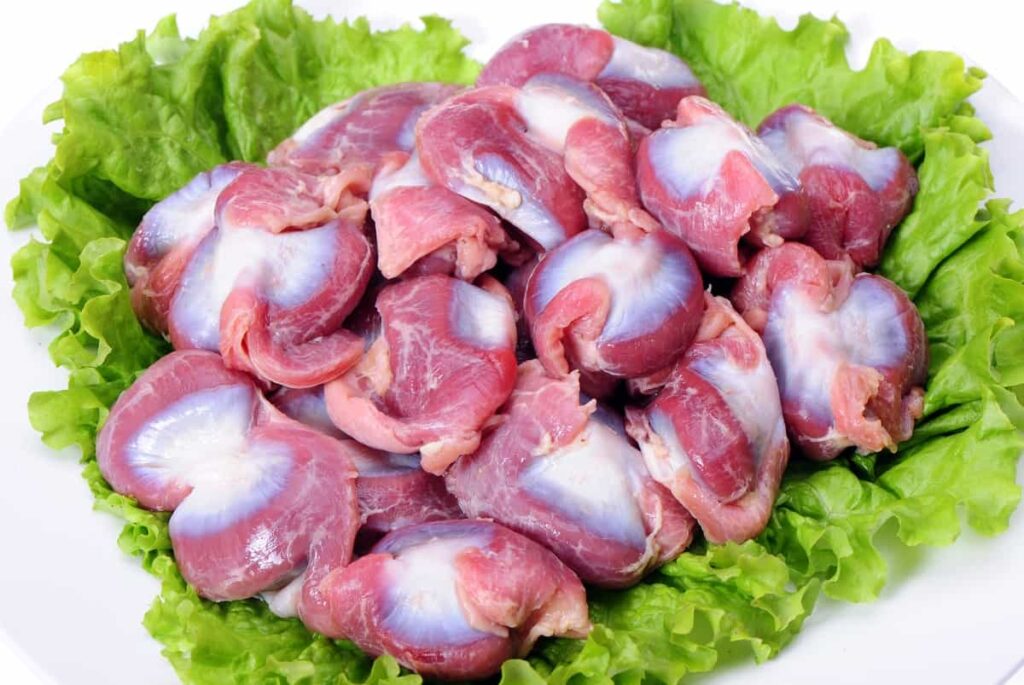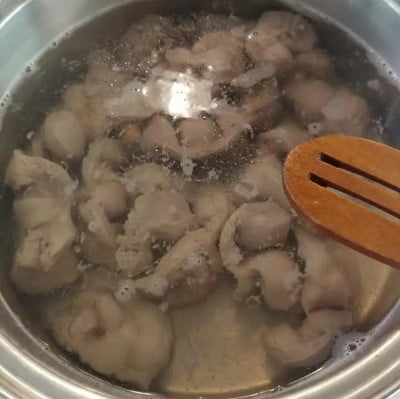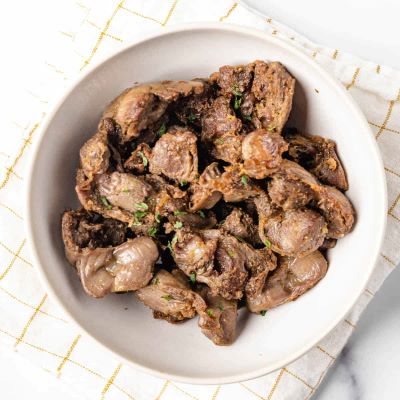How long should you Boil Chicken Gizzards for Cats?

As responsible pet owners, we understand the importance of providing our feline friends with a balanced and nutritious diet. Cats thrive on a diet rich in protein, and chicken gizzards offer a healthy and delicious treat that can supplement their regular meals. However, when it comes to cooking chicken gizzards for our furry companions, many cat parents wonder, “How long should you boil chicken gizzards for cats?”
In this article, we will delve into the benefits of chicken gizzards, the proper boiling technique, and guidelines for safely incorporating this treat into your cat’s diet.
Understanding the Benefits of Chicken Gizzards for Cats
Chicken gizzards are highly nutritious and packed with essential nutrients that contribute to your cat’s well-being. Some key benefits include:
- High Protein Content: Protein is vital for a cat’s overall health, as it supports muscle development, tissue repair, and a healthy immune system. Chicken gizzards are an excellent source of lean protein.
- Essential Vitamins and Minerals: Gizzards contain essential vitamins like B12 and minerals such as iron and zinc, which are essential for maintaining a cat’s energy levels and overall vitality.
- Natural Taurine Source: Taurine is a crucial amino acid for cats, necessary for maintaining healthy eyesight, heart function, and reproductive health. Chicken gizzards naturally provide taurine, making them a valuable addition to your cat’s diet.
Like gizzards, chicken hearts is also a very popular and healthy homemade snack that you can try feeding your cat.
Preparing the Chicken Gizzards
Before you embark on the process of boiling chicken gizzards for your beloved feline companion, it’s essential to take some preparatory steps to ensure the best possible treat for your cat.
Opt for Fresh and High-Quality Gizzards:
When selecting chicken gizzards for your cat, prioritize freshness and quality. Choose gizzards from a trusted source, such as a reputable butcher or a reliable pet food supplier. Fresh gizzards not only provide optimal nutritional value but also reduce the risk of any potential contamination or spoilage that could adversely affect your cat’s health.
High-quality gizzards will contain more essential nutrients, including protein, vitamins, and minerals, making them an even more valuable addition to your cat’s diet. Always check the expiration or sell-by date, and avoid gizzards that appear discolored, have an unpleasant odor, or show signs of freezer burn.
Thoroughly Clean the Gizzards:
Before boiling the gizzards, it is crucial to clean them thoroughly to ensure they are free from any debris or contaminants. Follow these steps to properly clean the chicken gizzards:
- Rinse under Cold Running Water: Place the gizzards under cold running water and gently rub them to remove any visible dirt or foreign substances. Cold water helps maintain the freshness of the meat and reduces the risk of bacterial growth.
- Remove Excess Fat and Membranes: Trim any excess fat or membranes present on the gizzards. While a small amount of fat can be beneficial for cats, removing excessive fat ensures the treat remains balanced and healthy.
- Pat Dry: After rinsing, pat the gizzards dry with a paper towel or a clean cloth. Excess moisture can affect the boiling process, so make sure they are adequately dried before proceeding.

How to Boil Chicken Gizzards for Cats?
Boiling chicken gizzards for cats is a simple and safe cooking method that preserves the essential nutrients while making the treat easier for your feline friend to digest.
How Long Should You Boil Chicken Gizzards for Cats?
Before diving into the cooking process, it’s essential to address the question of cooking time. The recommended boiling time for chicken gizzards depends on the desired texture and tenderness you want for your cat’s treat. Longer boiling will result in softer gizzards, while shorter boiling will maintain a slightly firmer texture, which some cats may prefer.
On average, boiling chicken gizzards for cats takes approximately 30 minutes. You can try experimenting with different boiling periods to see which one your cat prefers. Medical conditions in cats may also influence your choice. For example, if your cat has dental problems or is an old cat, longer boiling periods would be preferred for softer meat, which is easier to chew and digest.
Follow these step-by-step instructions to ensure your cat receives a delicious and nutritious treat:
- Place the cleaned chicken gizzards into a pot or saucepan.
- Pour enough water into the pot to fully cover the gizzards.
- Turn on the stove to medium heat and bring the water to a boil.
- Once the water is boiling, reduce the heat to low to maintain a gentle simmer. Boil for around 30 minutes, depending on your cat’s preferences.
- Alternatively, you can first boil the water, and then place the gizzards in the pot, while keeping the flame at a low simmer.
- To determine if the gizzards are fully cooked, cut one gizzard open to check the internal color. Cooked gizzards should have no pinkness, and the internal texture should be consistent throughout.

Serving and Storing Chicken Gizzards for Cats
After boiling the gizzards to perfection, the next step is to serve and store them properly to ensure your feline friend can enjoy this delightful treat safely.
Cooling and Cutting:
Once you’ve completed the boiling process, it’s crucial to allow the chicken gizzards to cool down before serving them to your cat. Hot food can cause burns or discomfort, so exercise patience and let the gizzards reach a suitable temperature.
Once the gizzards have cooled, it’s time to prepare them for your cat’s enjoyment. Cats have smaller mouths and different chewing abilities compared to humans, so it’s essential to cut the boiled gizzards into cat-friendly pieces. Smaller, bite-sized portions are easier for cats to chew and digest, reducing the risk of choking or digestive issues.
Adding to the Diet:
While boiled chicken gizzards can be a healthy and nutritious treat for cats, it’s crucial to remember that they should not replace your cat’s balanced cat food.
Treats, including boiled gizzards, should only constitute a small portion of your cat’s overall diet. The primary source of nutrition for cats should come from a complete and balanced commercial cat food that meets their specific dietary requirements. Alternatively, you can explore homemade options as well.
Storage Guidelines:
If your cat doesn’t finish all the boiled gizzards in one sitting, it’s essential to store the leftovers properly to maintain their freshness and prevent spoilage. Follow these storage guidelines:
- Refrigeration: Place any unused boiled gizzards in an airtight container and store them in the refrigerator. They can be kept fresh for up to 3-4 days under refrigeration. Make sure the container is clean and tightly sealed to prevent contamination and odors from other foods.
- Freezing: If you have a surplus of boiled gizzards or want to keep them fresh for an extended period, freezing is an excellent option. Place the cooled gizzards in a freezer-safe, airtight container or freezer bags. Label the container with the date to keep track of their freshness. Frozen boiled gizzards can be stored for up to 2-3 months without compromising their nutritional value.
Ending Note
Chicken gizzards offer a nutritious and protein-packed treat for cats, provided they are prepared and served correctly. By boiling chicken gizzards and following the guidelines presented in this article, you can introduce a delightful and healthy addition to your feline friend’s diet. Remember, moderation is key, and always prioritize your cat’s well-being when introducing new foods into their diet.


